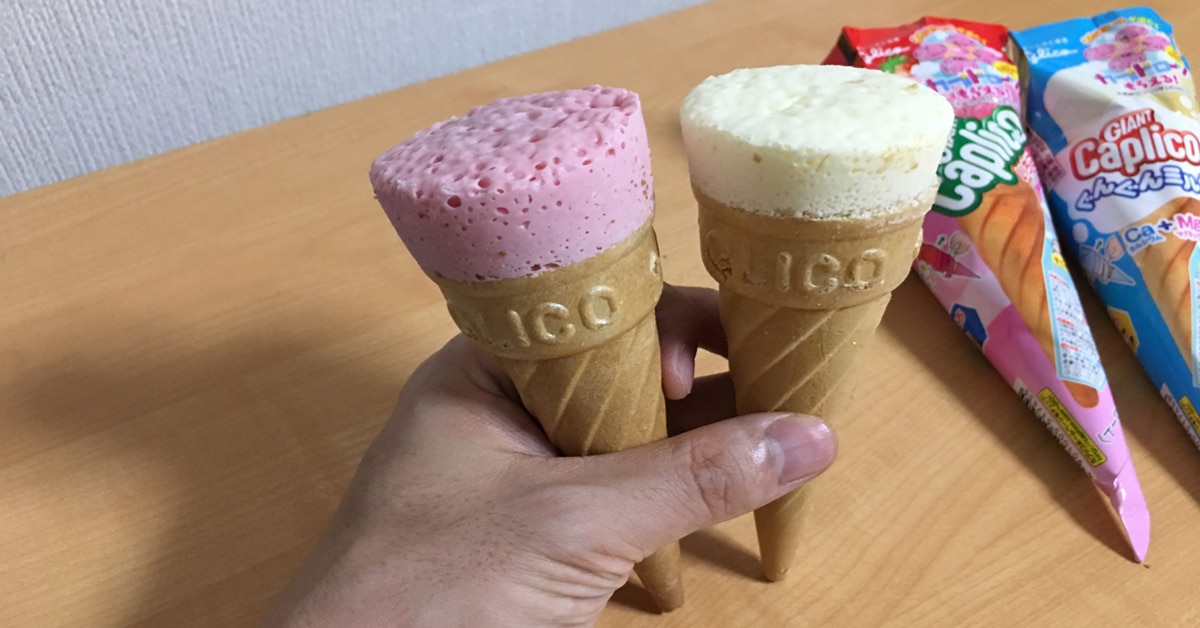Caplico – Japanese Crunchy Ice-Cream Snack
Wonderful Japanese sweets called Caplico sticks resemble little ice cream cones. The stick has two layers of cream filling and is composed of a crunchy wafer. A delightful balance of sweetness and crunchiness is created in your mouth by the two layers of filling and the wafer’s crispiness.
Since you came across this article, you must be wondering about the history of Caplico and what they taste like. Let’s dive into the sweet adventure of this Japanese snack.
Please leave a review or any memories of this snack in the comments at the bottom of this page. Thank you!
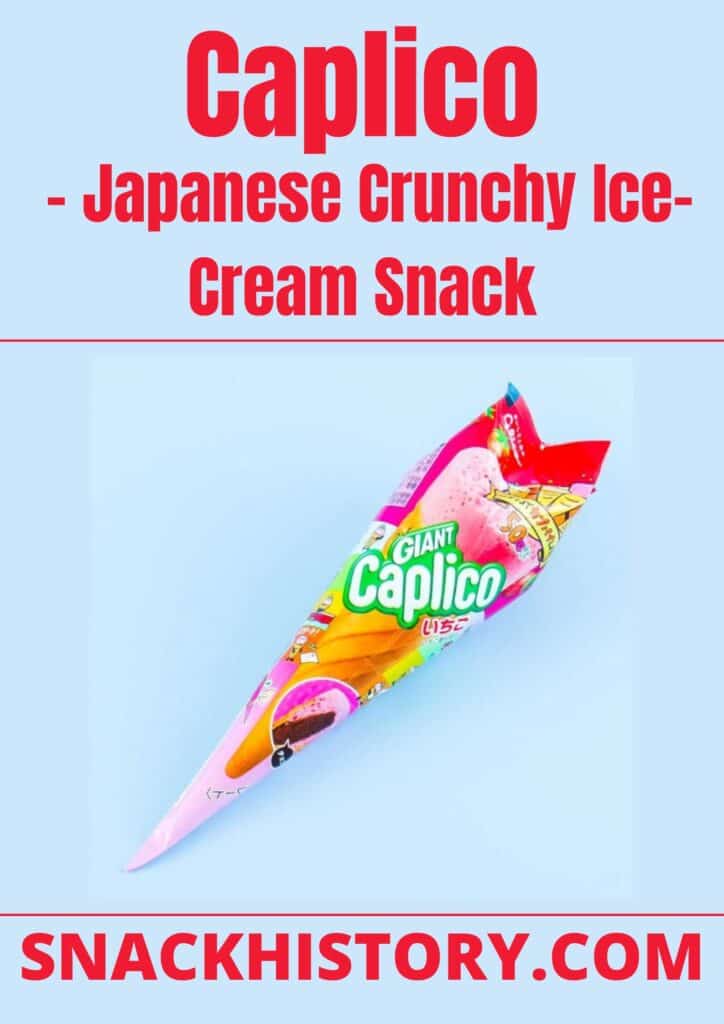
What is Caplico?
Caplico is a delightful chocolate delicacy that was specifically designed to imitate ice cream by the Japanese food manufacturing corporation – Ezaki Glico. These sweet and airy Japanese sweets are often served on top of a wafer cone. However, some may come in tiny bite-sized variants in the form of hearts, stars, or little sticks.
Thanks to their unique concept, charming shape, and delicious filling, the chocolate sweets under the Caplico brand quickly gained popularity among Japanese children. Some adults are also guilty of enjoying and adoring the line’s sweet flavor. Atama Strawberry Chocolate Hearts, Glico Giant Caplico, and Glico Giant Cone Ice Cream are some of the most popular and well-liked Caplico variations.
This Japanese snack is a great option for a developing child since it includes calcium and magnesium. The product has just undergone an upgrade with better form retention and heat resistance. This implies that Caplico may be consumed at room temperature or cooled by keeping it in the refrigerator. Some Calicos have the mascot for the product, Capusuke, drawn on the chocolate. Even though finding one is uncommon, if you do, it is going to be your fortunate day.
Glico Giant Cone Ice Cream
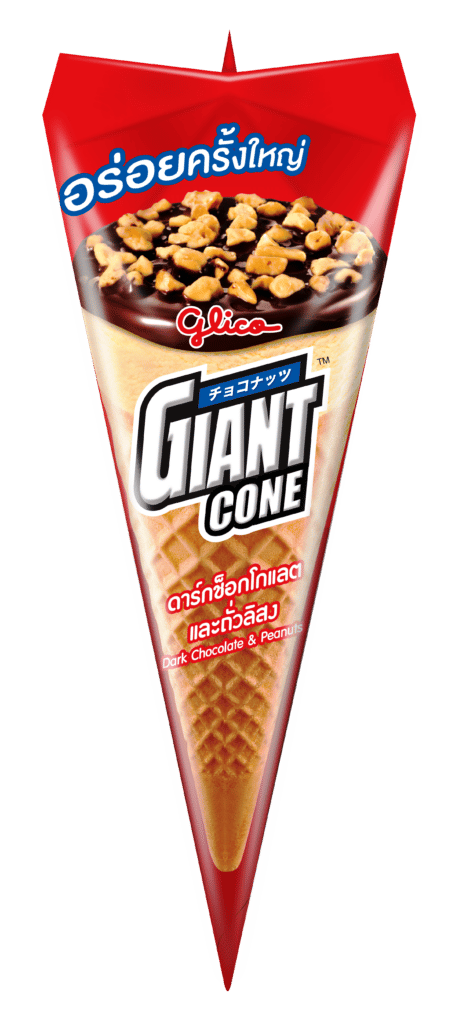
The Glico Giant Cone Ice Cream was a masterpiece of a snack made by Ezaki Glico eight years after the Glico Giant Caplico. Similar to the entry above, this unmeltable chocolate nibble has a similar appearance to the beloved summertime treat. The Glico Giant Cone Ice Cream, as opposed to the Glico Giant Caplico, is topped with a thin coating of milk chocolate that is completely covered in crunchy peanut pieces.
A thin, crunchy coating of coated chocolate and ice milk with far less milk fat than typical ice cream is within the wafer cone. The ice milk’s mild flavor blends flawlessly with the other flavors of the snack. The sweetness of the chocolate components is successfully subdued. While the unfrozen chocolate cream at the bottom of the wafer cone guarantees enjoyment with every bite. Today, the Glico Big Cone Ice Cream costs 140 yen, or about $1.3.
Caplico Atama Strawberry Chocolate Hearts
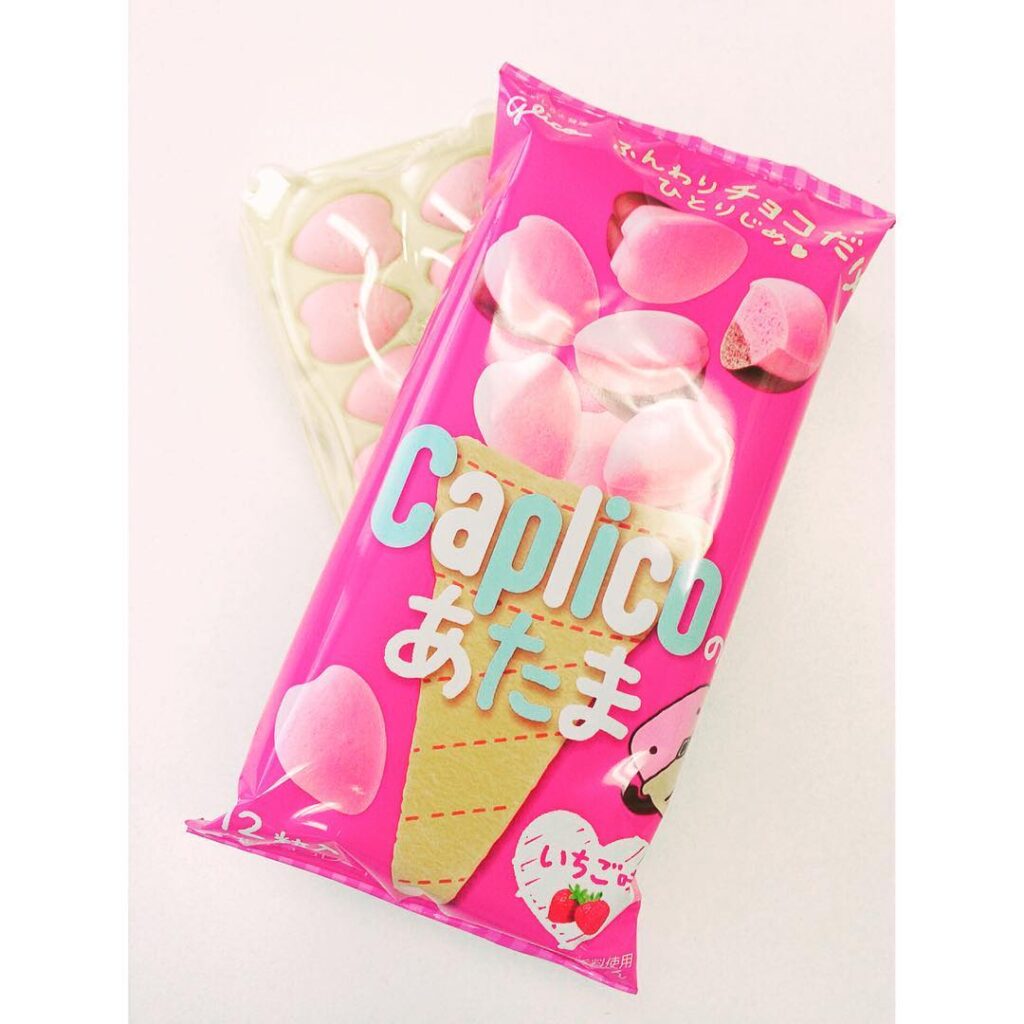
Unlike other Caplico delights, the Caplico Atama Strawberry Chocolate Hearts don’t have a cone. Instead, they are intentionally dubbed “Atama,” which is Japanese for “head.” The sweet tastes on the Caplico’s top, or head, make it especially mouthwatering. These pink strawberry chocolate-covered milk chocolate Caplico Atama are created in the shape of a heart, which makes them an excellent option for those who’re looking for special candy for Valentine’s Day.
Eating this chocolate delicacy is a true pleasure since it melts rapidly on your tongue and is effervescent. Whether you like Japanese sweets or not, you will definitely like one of these. Notably, this delicious candy is made from vegetarian ingredients. Therefore, if you’re vegetarian, chances are that you’ll especially enjoy Japanese delicacies.
Glico Giant Caplico
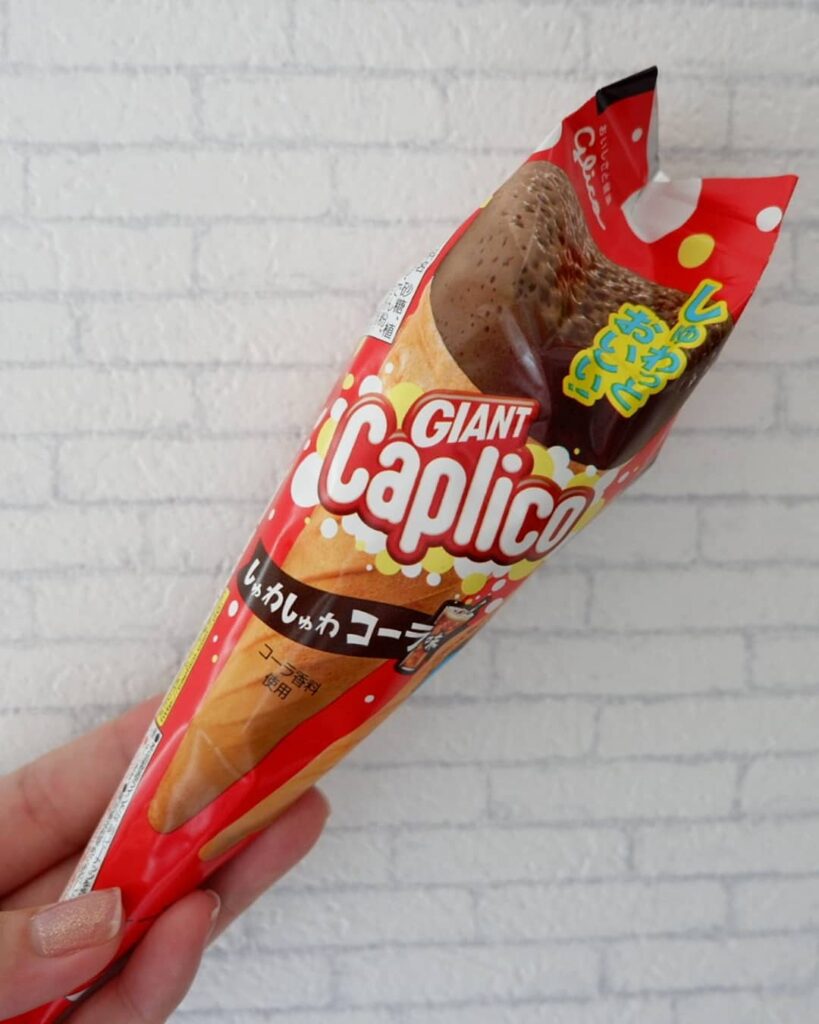
It’s likely that while discussing ice cream cone delights with Japanese people, they will bring up the Glico Giant Caplico. That is how much one specific food has influenced Japanese people’s lives over the course of many years. The Glico Giant Caplico, which was first produced in 1970, is currently sold in milk and strawberry flavors, each of which costs around 100 yen, or roughly $1, on the market.
Similar to soft-serve ice cream brands, the Glico Giant Caplico is a cone-shaped chocolate snack. Brown milk chocolate filling and strawberry-cookie-like chocolate or milk-flavored chocolate are placed on top of the wafer cone. Its wafer cone is not empty inside, in contrast to regular ice cream. It has a honeycomb-like filling made of unmeltable milk chocolate with air in it.
When chewed, it has a much more enjoyable crunch than ordinary cookies since it is milky, smooth, and mild. Three distinct toppings are available for the chocolate-filled cone: chocolate, strawberry, and vanilla.
What Is Caplico Made Of?
The ingredients used to make almost every Caplico include sugar, whole milk powder, cocoa butter, milk sugar, various flavorings, vegetable fat, cacao mass, whey powder, salt, starch, yeast extract, and wheat flour for the wafers. The Glico Giant Caplico has 190 calories per 34 grams, while the Glico Giant Cone has 280 calories and 0.1 grams of salt equivalent in each serving.
Where To Buy Caplico Candy Today
Japan is definitely on top of its confectionery game. It features unique offerings that can only be found there for folks with sweet teeth. Are you wondering where you might find such treats in the US? To appreciate its cuisine and culture, you no longer have to journey all the way to the country of the rising sun. Japan itself will be delivered straight to your house if you order the Caplico candy online.
Company That Manufactures Caplico
With its headquarters in Nishiyodogawa-Ku, Glico is a global Japanese food manufacturing corporation that makes Caplico candy. It conducts business in 30 nations, including Europe, Asia, and North America.
Cuchieco is a unique caramel candy that Riichi Ezaki, the creator of Glico, invented in 1919. A caramel candy product made by Riichi Ezaki in 1919 included glycogen that was obtained from oysters. “Cuchieco” was the brand name of the caramel candies. “300 Meters in a Single Piece” was the tagline for this product, and a sprinting guy was painted on the packaging. At the Mitsukoshi Osaka branch, Riichi began selling Glico goods in 1922.
The corporation soon felt the effects of the war, and by about 1945, nearly all domestic and international industrial facilities had been destroyed. However, Riichi Ezaki had a strategy and said that even if their factories were destroyed, their only remaining value was the Glico name. They restarted the manufacturing of goods like Bisco and Glico Caramel before introducing fresh goods that have since become bestsellers.
Since 1996, Glico has increased the number of items it releases that are consistent with its mission to provide food that not only tastes delicious but also has positive health effects.
Logo
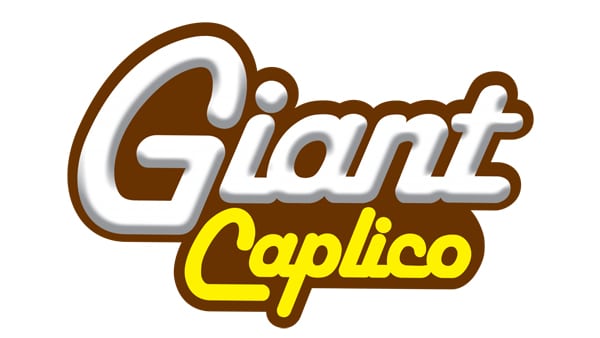
Ingredients
- Wheat Flour
- Starch
- Sugar
- Vegetable Fat
- Salt
- Yeast Extract
- Lactose
- Whole Milk Powder
- Cacao Mass
- Cocoa Butter
- Milk
- Season Flavoring
- Caramel Color
- Annato Color
- Citric Acid
Nutrition
| Serving Size: | 1.2 oz (33g) | % Daily Value* |
| Amount Per Serving | ||
| Calories | 180 | |
| Calories from Fat | 99 | |
| Total Fat | 11g | 17% |
| Saturated Fat | 6g | 30% |
| Trans Fat | 0g | |
| Cholesterol | 2.5mg | 1% |
| Sodium | 25mg | 1% |
| Total Carbohydrates | 19g | 6% |
| Dietary Fiber | 0g | 0% |
| Sugars | 18g | |
| Protein | 1g | |
| Vitamin A | 0% | |
| Vitamin C | 0% | |
| Calcium | 2% | |
| Iron | 0% |
- Percent Daily Values are based on a 2000-calorie diet.
Popular Snacks Made By Glico
We explored Caplico and checked out what it looks like and how it is made. However, the company has been manufacturing numerous amazing candies that have won the hearts of people. Manufacturing confectionery goods, including chocolate, chips, chewing gum, ice cream, and dairy items, is the main line of business for Ezaki Glico.
In addition, Glico produces dietary supplements as well as processed meals, including curry stocks and retort takikomi gohan pouches. Meiji Seika, Lotte, Morinaga, Fujiya, and Bourbon Company are Glico’s primary rivals in the confectionery industry, and House Foods, Meiji, and S&B Foods are its rivals in the processed food industry.
Glico Pocky
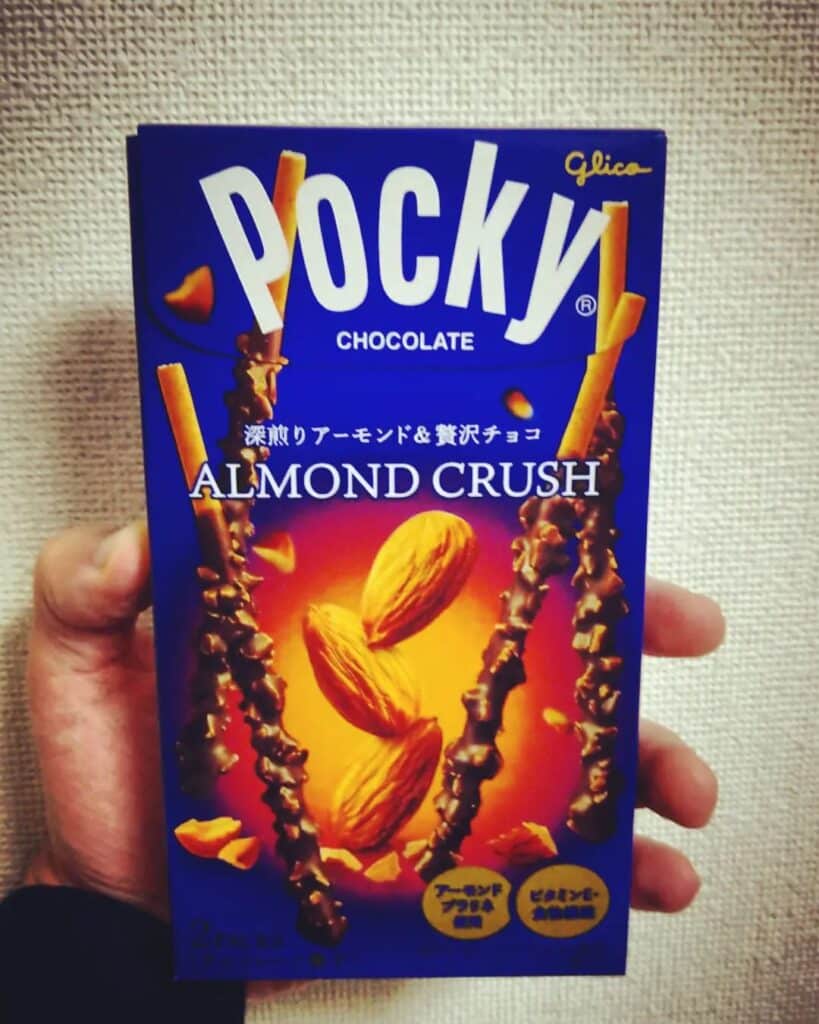
This confectioner is most known for its Glico Pocky, a delicious cookie-like stick coated in chocolate that is perfect for snacking on or swirling in hot liquids. For even more variety, these special delights also come dipped in strawberry, green tea, or matcha tea cream. Pocky managed to become part of the culture. Even more, Japanese people celebrate “Pocky Day” on the 11th of November annually.
Glico Pretz
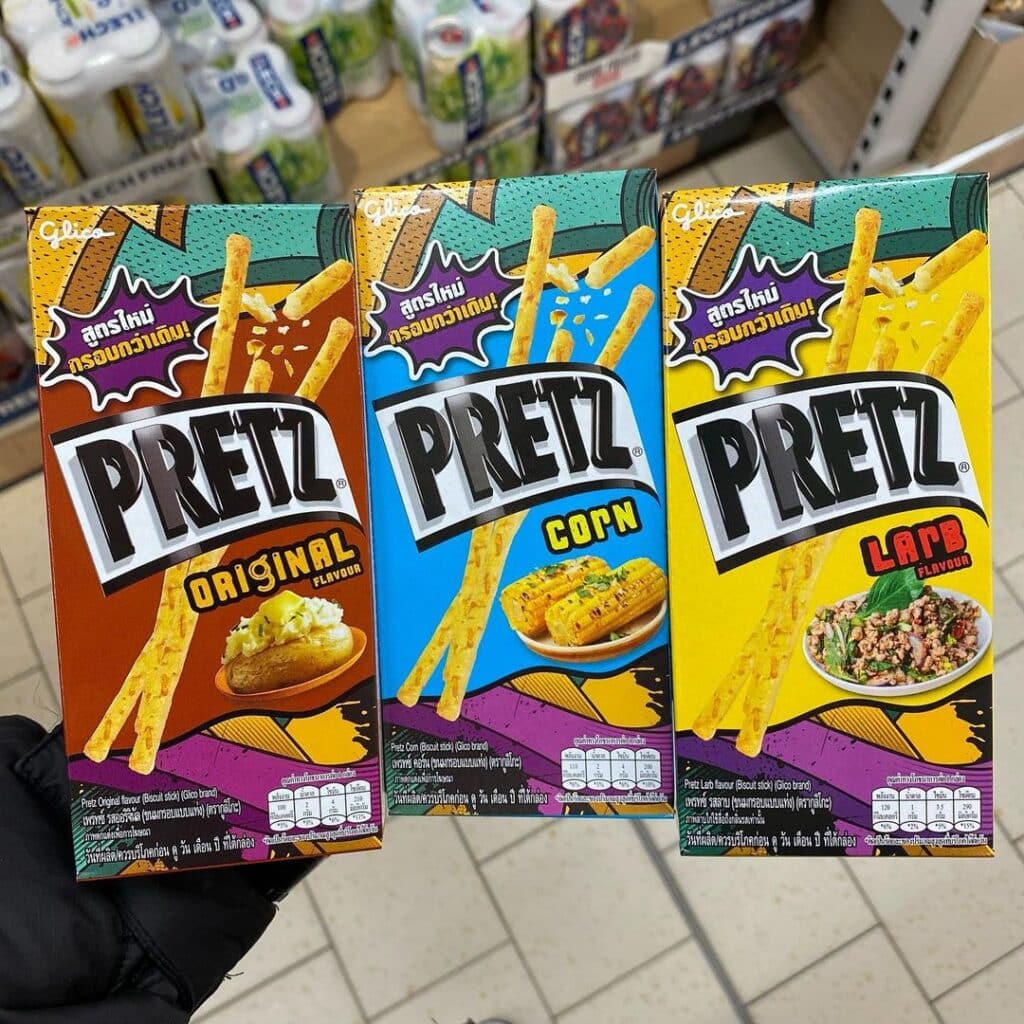
Glico Pretz is a delicate pretzel stick that is available in flavors like pizza and sweet corn for a savory snack. Pretz is a salty snack as opposed to the previously stated sweet delicacies. These are based on the German pretzel snack while having a stick-like appearance like Pocky. The Pretz products, which were first sold in 1963, are available in a range of tastes, from somewhat sweet to pleasant and salty.
Bontan Ame
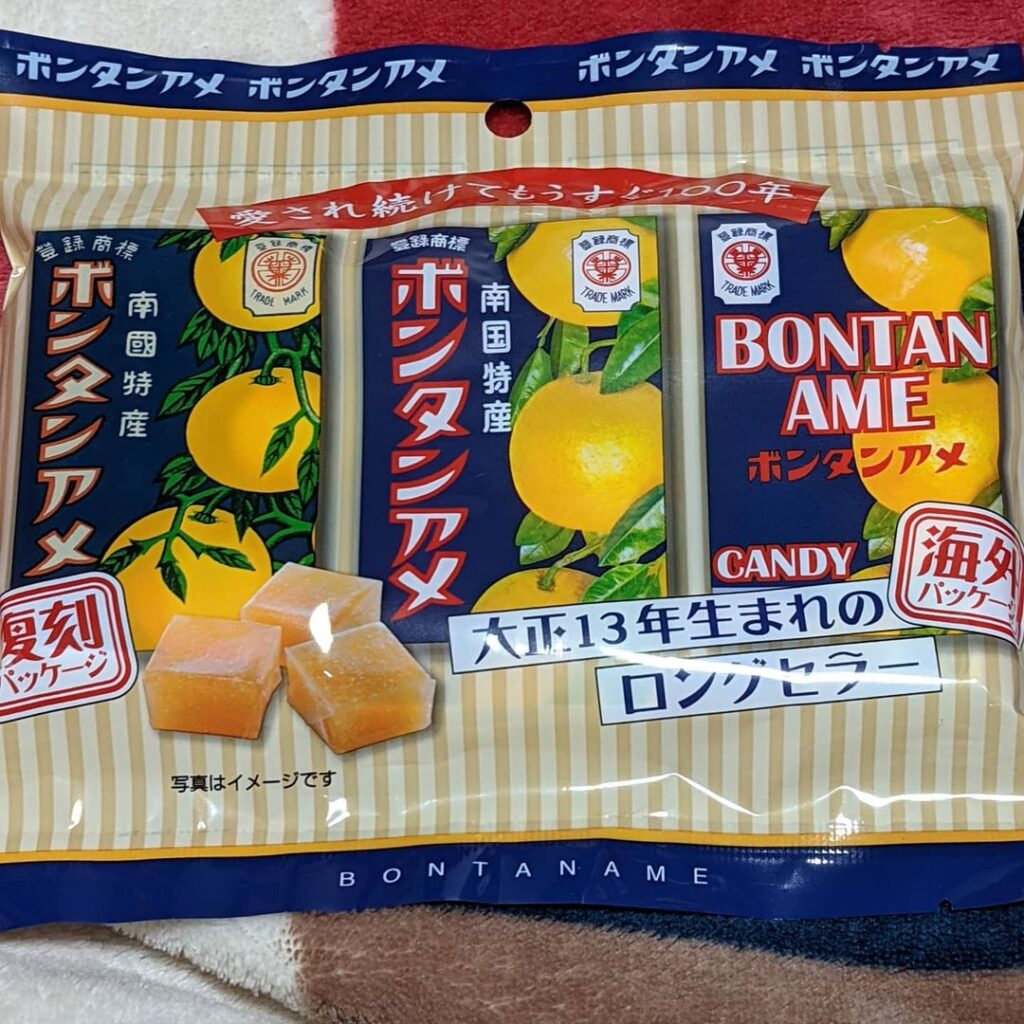
The first Japanese soft candy was actually manufactured by Glico. A rice sweet called Bontan Ame was developed in 1926. Those Japanese gummy sweets are perfectly firm, soft, and chewy.
Pucchin Pudding
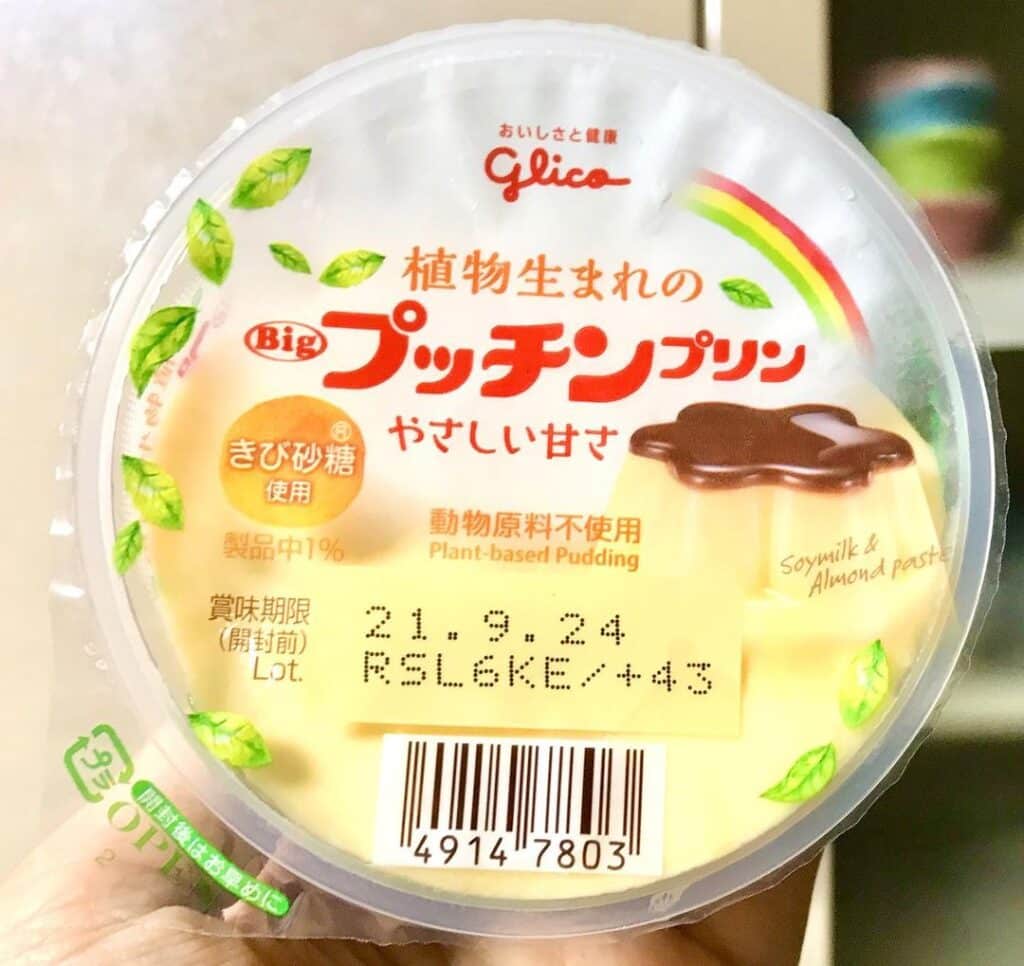
Pucchin pudding is another beloved and adored product made by Caplico. The pudding can drop onto a plate for you to consume thanks to a mechanism at the base of the plastic cup that fills the vacuum with air. The most well-known pudding in Japan, Glico’s Pucchin Pudding, had this packaging that has gone viral.
When you have a sweet tooth, treat yourself to this delicious custard “pudding jelly” delicacy with caramel sauce. There are unique premium variants of the affordable pudding cups that utilize a honey-based syrup rather than a caramel one, as well as mini-sizes, giant-sizes, and other variations.
Commercials
Bottom Line
The Caplico snack truly lives up to its slogan: “a sporty chocolate that we can enjoy with one hand.” Although it’s made of chocolate and a cone, it looks like ice cream.
Japanese candies are now adored all over the world for their distinctive textures and limited-edition seasonal tastes. Caplico has been adored by many people, especially with the seasonal and time-limited flavors that have recently been released.

Nato is a content writer and researcher with a background in psychology. She’s passionate about writing about the candy industry and exploring the cultural significance of sweets and treats. She believes that the stories behind our favorite snacks can reveal a great deal about our values.
Please leave a review or any memories of this snack in the comments below. Thank you!
Click here for a full A-Z list of Snacks and Candy
